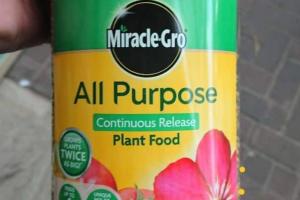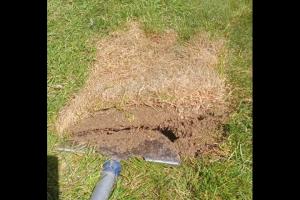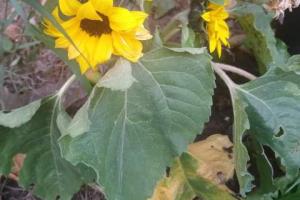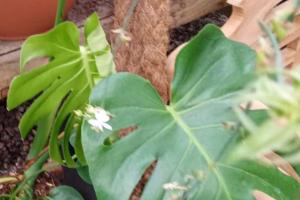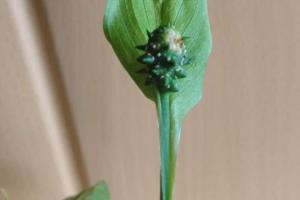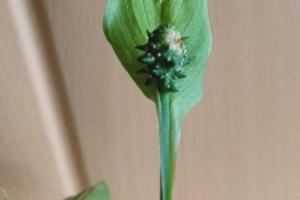Chrysanthemum Dying? (How to Revive Dying Mums)
The reason for dying Chrysanthemums is most often due to dry soil, cold temperatures or fungal disease. To avoid drooping Chrysanthemums, ensure that the soil is consistently moist and protect them from midday sun.
It is worth noting that even ‘hardy’ varieties die in temperatures lower then 23°F (-5 °C) in Winter.
To revive a dying Chrysanthemum it is important to create the optimal conditions of its natural environment by ensuring that the soil is consistently moist, protecting them for intense sunshine and high temperatures and sheltering them from excess wind.
| Symptoms of Dying Chrysanthemums: | Reason for Dying Chrysanthemums: |
| Drooping Leaves: | By far the most common reason is dry soil. Chrysanthemums can droop even if the soil is only dry for a very short period. Transplant shock or sudden changes to their environment also cause drooping leaves. |
| Chrysanthemums Dying in Pots: | Dry soil as pots dry out too quickly. Low humidity indoors can cause drooping/ brown leaves. |
| Leaves Turning Brown: | Overwatering, fungal diseases, cold weather all cause brown leaves. Leaves also turn brown and die back every Winter naturally before re-sprouting in Spring. |
| Leaves Turning Yellow: | Overwatering, low fertility soil and extreme heat and sunshines. |
| Flowers Turning Brown, Wilting and Dying: | Flowers wilt and die quickly in temperatures higher 75°F (24°C) for sustained periods. |
Keep reading for how to solve these problems and revive your chrysanthemums so that they are healthy and bloom well the following year…
Chrysanthemum Drooping and Dying
Chrysanthemums are exceptionally thirsty plants and need the soil to be consistently moist, especially during the Spring and Summer. If the soil dries out completely then a Chrysanthemum can droop and deteriorate quickly, even if the soil is only dry for a short period.
In my experience, dry soil is by far the most common reason for a Chrysanthemums drooping and dying as they are the most unforgiving houseplants/ garden plants when it comes to drought stress.
Another common reason for drooping Chrysanthemums that I see very often is because of a sudden contrast in conditions due to repotting or if they have been transported from a garden center to your house or garden.
Chrysanthemums are relatively sensitive plants when it comes to being moved and tend to protest by drooping its leaves and flowers.
Chrysanthemums are often cultivated in specific conditions in a nursery with carefully controlled temperatures, humidity, sunlight and watering. Any contrast in these conditions can be the cause for a drooping Chrysanthemum.
Chrysanthemums Drooping and Dying in Pots
Droughts stress can be especially problematic for Chrysanthemums grown in pots as pots can heat up quickly in the sun and dry out.
Pots also obviously have a limited capacity for soil and therefore hold less moisture.
If the potting soil does dry out completely then it can often become hydrophobic (if it contains peat moss) which means water is repelled off the surface of the soil and runs off down the side rather then infiltrate the soil and reach the roots causing the leaves to droop.
Chrysanthemums also prefer sunny locations with areas of morning sun followed by afternoon shade being particularly favourable.
Indoor potted Chrysanthemums leaves and flowers can turn brown due to lower humidity, in which case locate the Chrysanthemum out of the direct path of drying air currents such as air conditioning or forced air and mist the leaves regularly.
It is also worth noting that potted chrysanthemum are particularly vulnerable to the cold as their roots are more exposed then chrysanthemums that are planted in the ground. Therefore sudden cold snaps can bring about their demise.
How to Revive a Drooping, Dying Chrysanthemum
To save a Chrysanthemum that is drooping and dying it is important to address the cause of the environment stress and create the optimal conditions for growth.
- Locate potted Chrysanthemums in ideally 6 hours of morning sun followed by shade in the afternoon. This provides a balance so that the Chrysanthemum can take advantage of the sunlight whilst the temperature is somewhat cooler. Afternoon sun can heat up pots and dry out the soil before the roots have a chance to draw up moisture.
- If the Chrysanthemum is in a pot, place the pot in a basin of water ensuring that the rootball is submerged for around 10 minutes or so. This allows the soil to properly absorb moisture to alleviate the drought stress that resulted in the drooping leaves. The pot should feel much heavier as the soil should be evenly moist.
- Always give Chrysanthemum a generous soak when watering, ensuring that excess water trickles from the base of the pot. The goal with water should be that the soil is evenly moist. If your Chrysanthemum is potted then pick up the pot after watering to assess its weight. It should feel reassuringly heavy after watering as the soil is holding moisture.
- It may be necessary to water Chrysanthemums every 2 or 3 days if they are in pots and the weather is hot. I have spoken to Chrysanthemums in hot and dry climates (Southern California in particular) who. water every day on the hottest days of the year, such is the Chrysanthemums demand for moisture.
- If your Chrysanthemum is planted in the ground then I recommend either using a large water can or even a hose to soak then ground and the apply a 1 inch layer of compost mulch around the base of the Chrysanthemum. The mulch helps to lock moisture in the ground and prevents the underlying soil from heating up too much and drying out.
- Chrysanthemums need to be in a warm sheltered location and do not like excess wind. If indoors be mindful of air currents such as air conditioning or convection currents from indoor heating. Outdoor Chrysanthemums should not be planted in open, windy areas so either transplant the Chrysanthemum or provide a wind break with other shrubbery.
Provide the Chrysanthemum with the right conditions of morning sun, consistently moist compost with warm temperatures in a sheltered area and the chrysanthemum should be able to adjust to the new conditions and recover from its drooping state.
Chrysanthemum Leaves and Flowers Turning Brown
Chrysanthemum leaves and flowers can turn brown if they are planted in water logged soil, or they are exposed to cold temperatures. Chrysanthemums turn brown and die back every Winter before coming back and re-sprouting in the Spring.
Chrysanthemums can be broadly separated into varieties that are tender and those that are full hardy.
Tender Chrysanthemums do not tolerate frost which causes the leaves to turn brown and completely die back, but not re-sprout in the Spring.
However it should be noted that even ‘hardy’ Chrysanthemums can die in Winter, particularly if the temperature is as low as 23°F (-5 °C).
(There are countless varieties of chrysanthemum, so to establish whether your plant is hardy or not, find the name of your variety and google it or ask a reputable garden center for advice! But generally speaking any chrysanthemum that is sold as ‘indoor’ is not cold hardy and any sold as ‘outdoor’ should be hardy).
Therefore Chrysanthemums should only be grown in pots and then placed outside in the Spring and Summer in climates with cold Winter.
Ideally store Chrysanthemums in a cool frost free greenhouse over Winter as bringing them indoors in Winter can be too much stress due to the contrast between outdoor temperatures and room temperatures, particularly if the heating is on indoors during the Winter.
Return them to the outdoors when the threat of frost has passed and the temperature at night is consistently above 40°F (5°C).
If you have a hardy variety then the foliage should die back in Winter even if the temperature are mild. This is not a cause for concern and is part of the Chrysanthemums life cycle. Simply cut the Chrysanthemum to a few inches above the ground.
It is a good idea to use a layer of mulch (compost, wood chip etc.) around the base of the Chrysanthemums to insulate the roots and use a cloche over the top to protect it from excessive Winter rain which can cause the soil to be too boggy for the Chrysanthemums to tolerate.
It is worth noting that another common reason for Chrysanthemums dying is because of overwatering, slow draining soil, or pots without drainage holes in the base.
Whilst Chrysanthemums need the soil to be moist they do not tolerate boggy saturated soil, which causes the roots to rot, turning the leaves brown and ultimately killing the plant.
If you have clay soil that drains slowly or a low lying boggy garden then the solution is to grow Chrysanthemums in pots as they inevitably die back in these conditions.
Boggy soil promotes the conditions for fungal disease (such as rust) to proliferate. It is also imperative to water Chrysanthemums at the base of the plant as high humidity and leaf wetness promote the conditions for Bacterial Stem Canker (Pseudomonas cichorii) which turns both the stems and leaves black with a dying appearance, to which there is no cure and it is important to remove and discard the plants to prevent the fungus from spreading.
The prevention of bacterial stem canker is simply a matter of watering at the roots and (if you live in a climate of humidity) planting the Chrysanthemums in a more open area and a good distance from other plants to allow airflow to circulate around the eaves rather then overcrowding them with other foliage.
(Here is a full list of fungal diseases that can affect chrysanthemums).
Chrysanthemums Turning Yellow
In my experience Chrysanthemum most often turn yellow because of a combination of intense sunlight and heat.
However yellow leaves can also be caused by a nutrient deficiency.
It is best practice to fertilize Chrysanthemums every year in the Spring as the flowering process can place a huge demand for nutrients.
Potted Chrysanthemums only have limited access to nutrients and so using a general all purpose liquid feed in May or June once every 2 weeks can prevent the leaves from turning yellow and ensure the Chrysanthemum has all the resources it requires for a good display of flowers.
If the Chrysanthemum has been scorched by sunlight and heat at the height of Summer then provide the plant with some afternoon shade. It is not possible for the scorched leaves to turn from yellow to green again, so this years display of both flowers and foliage is likely to be compromised.
However, as Chrysanthemums are perennial, they die back in Winter and green foliage should emerge the following Spring.
Overwatering and poor drainage is another potential cause of yellowing leaves.
If the soil drains just slightly to slowly then the excess water in the soil can exclude oxygen from the soil which interferes with the plants ability to respire and causes the leaves to turn yellow.
In which case it is important to either water slightly less often (making sure that the soil is moist and not boggy) or ideally improve the drainage by transplanting the Chrysanthemum in a pot with drainage holes in the base and with well draining potting soil.
Once the roots are able to respire the chrysanthemum should recover, although in my experience the recover may be somewhat limited and you may have to wait until the following Spring for the Chrysanthemum to look its best.
Chrysanthemum Blooms Dying
The Chrysanthemum’s blooms can open and then fade, wilt and die quickly due to high temperatures. If temperatures are higher then 75°F for a long period them the blooms quickly die.
To prevent this from happening it is imperative to plant Chrysanthemums in morning sun followed by afternoon shade.
Chrysanthemum need sun in order to stimulate blooming, but blazing sunshine in the afternoon when the temperatures are highest is going to be too hot for the Chrysanthemum to sustain its blooms.
Unfortunately Chrysanthemums only bloom once per year so if the bloom coincides with a heat wave then it may bring about the demise of the blooms early in the season.
If your Chrysanthemums are indoors then consider carefully where you locate the plants, keeping them out of the way of indoor heating and ideally not placing them in a window sill that get particularly hot.
Key Takeaways:
- The reason for chrysanthemums drooping and dying is because the soil is dry. Chrysanthemums need consistently moist soil. If the soil dries out, even for a short time the leaves and flowers wilt and can even turn brown.
- A dying potted chrysanthemum is most often caused by drought stress due to the pot drying out too quickly or because of a lack of nutrients. Chrysanthemums are relatively heavy feeders and can turn yellow if their roots do not have access to sufficient nutrients in the potting soil.
- A Chrysanthemum’s leaves turn brown due to fungal disease, overwatering, and cold temperatures.
- Chrysanthemum flowers wilt and die quickly when the temperature exceeds 75°F (24°C).
- To revive dying chrysanthemums, create their optimal conditions for growth with morning sun followed by afternoon shade, ensure the soil is consistently moist with frequent watering and protect the plant from temperatures lower then 23°F (-5 °C).



